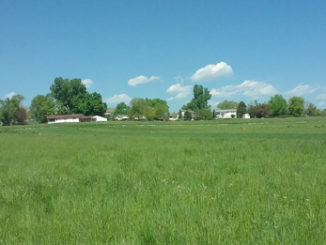Noxious weeds threaten wildlife habitat, agriculture, and recreational opportunities. This threat to Colorado’s environment and economy has been recognized and addressed through the Colorado Noxious Weed Act. The act, among other things, requires all local governing agencies, cities and counties to develop weed management plans for their jurisdictions.
The impact of weeds was first recognized in the United States as an economic problem in agriculture. Weeds in farmland and rangeland reduce crop yield and forage production costing farmers and ranchers tens of billions of dollars each year. In the arid west, weed competition in cropland becomes critical when soil moisture is the limiting factor. Deep-rooted weeds such as bindweed and Canada thistle utilize moisture deep within the soil profile rendering some farmland unproductive unless controlled.
Invasive weeds have become a huge factor affecting natural areas. Weeds reduce native plant diversity and wildlife carrying capacity on countless acres of forest and rangeland in the Western United States. Weed species such as cheatgrass, once established, can form dense stands that crowd out native grasses and shrubs over vast tracts of rangeland and serve as the primary fuel for frequent wildfires.
Spotted knapweed, a noxious weed unpalatable to grazing animals, infests an estimated 5 million acres in Montana. Many mountain meadows on U.S. Forest Service land that formerly served as critical wildlife habitat are now dominated by knapweed, forcing elk herds to alter historic migration routes. These weeds and others are present in Larimer County but, fortunately, not yet in such abundance.
The Larimer County Weed District works to minimize existing weed problems and eliminate new invaders before they take hold. The district has an enforcement program in place but prefers to work cooperatively with county residents to manage noxious weeds and establish desirable vegetation. Residents are encouraged to call the weed district office and set up a site visit, free of charge.
Site visits typically take 20 to 40 minutes and can address topics such as plant identification, weed management recommendations, grazing management, and pasture or range restoration. The district offers a sprayer loan program, educational literature, and presentations to homeowners associations or other interested groups. Also available to residents within the district is a cost share program for herbicide purchases, and contract spraying, mowing and grass seed drilling.
Weeds on your property are not just your problem. Seed can be spread by wind, water, birds, livestock, hay and other vectors. Be a responsible landowner and learn to identify and control weeds before they spread and become your neighbor’s problem.
General information on the State’s Noxious Weed Management Program can be found at www.colorado.gov/ag/weeds. Information on Larimer County’s weed management program can be found at www.larimer.org/weeds, or by calling 970-498-5768.
Support Northern Colorado Journalism
Show your support for North Forty News by helping us produce more content. It's a kind and simple gesture that will help us continue to bring more content to you.
BONUS - Donors get a link in their receipt to sign up for our once-per-week instant text messaging alert. Get your e-copy of North Forty News the moment it is released!
Click to Donate


